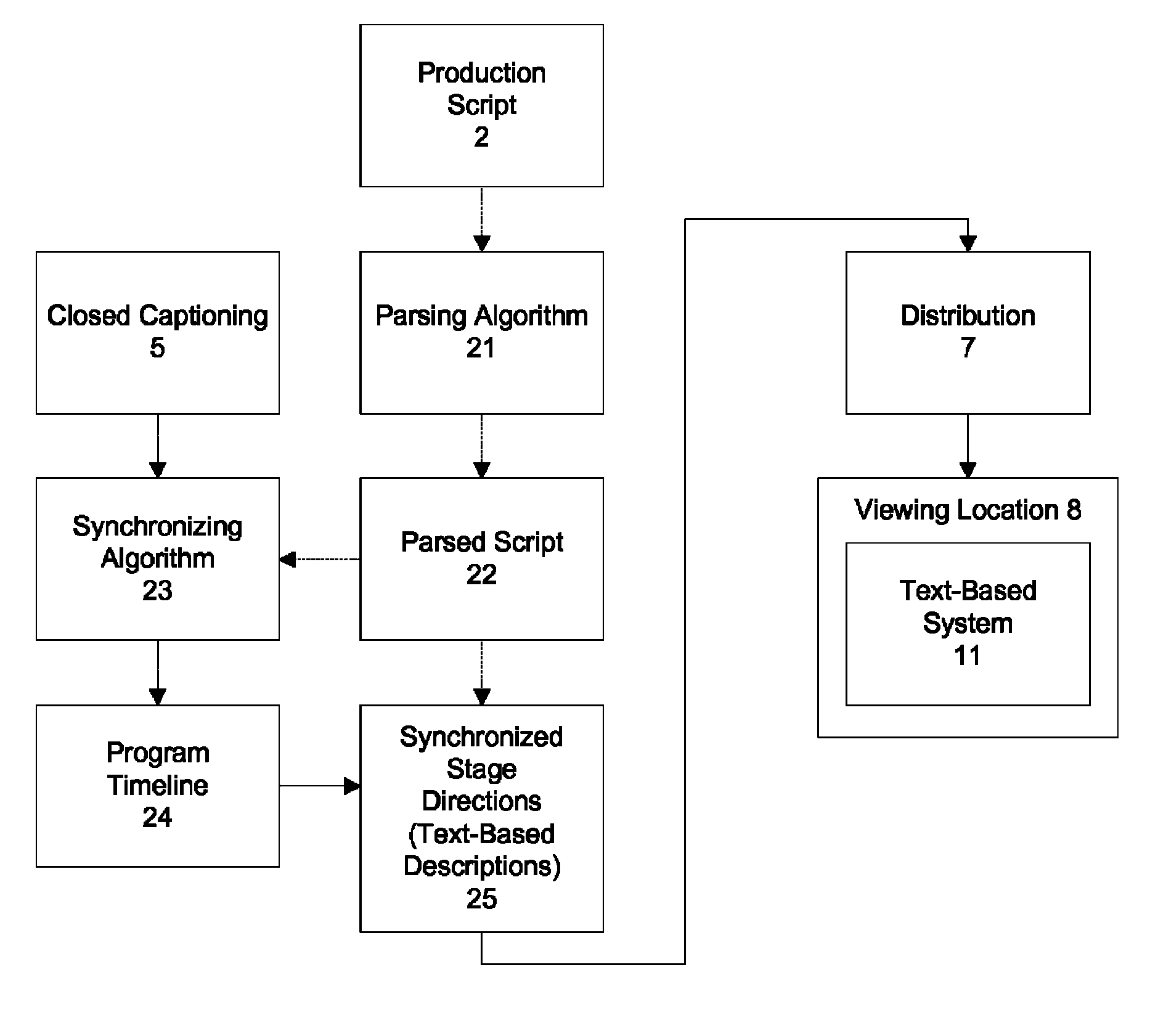Method and process for text-based assistive program descriptions for television
a technology of text-based assistive program descriptions and television, which is applied in the direction of television systems, signal generators with optical-mechanical scanning, instruments, etc., can solve the problems of time-consuming and expensive production processes of conventional audio-based video description services, difficulty in providing content to aurally or visually impaired, etc., to achieve less time-consuming and expensive, maintain or improve the accuracy of conten
- Summary
- Abstract
- Description
- Claims
- Application Information
AI Technical Summary
Benefits of technology
Problems solved by technology
Method used
Image
Examples
Embodiment Construction
[0041]FIG. 3 illustrates components of a text-based video description service using script-based parsing and synchronizing algorithms, according to an example embodiment of the present invention. A production script 2 generally includes two primary elements: dialogue and stage directions. Dialogue is that portion of the production script 2 that represents the dialogue in which actors are to engage during a program. This may include spoken words, such as, for example, “I love you,” spoken by an actor, as shown in FIG. 4. Stage directions are that portion of the production script 2 that represents the directions that the actors and / or set structures are to follow during a program. This may include actions of an actor, such as, for example, a direction of [Tom kisses Molly], as shown in FIG. 4. A production script 2 may include other elements, such as technical directions for cameras, lighting, etc.; however, such other elements are not discussed herein in further detail.
[0042]Producti...
PUM
 Login to View More
Login to View More Abstract
Description
Claims
Application Information
 Login to View More
Login to View More - R&D
- Intellectual Property
- Life Sciences
- Materials
- Tech Scout
- Unparalleled Data Quality
- Higher Quality Content
- 60% Fewer Hallucinations
Browse by: Latest US Patents, China's latest patents, Technical Efficacy Thesaurus, Application Domain, Technology Topic, Popular Technical Reports.
© 2025 PatSnap. All rights reserved.Legal|Privacy policy|Modern Slavery Act Transparency Statement|Sitemap|About US| Contact US: help@patsnap.com



